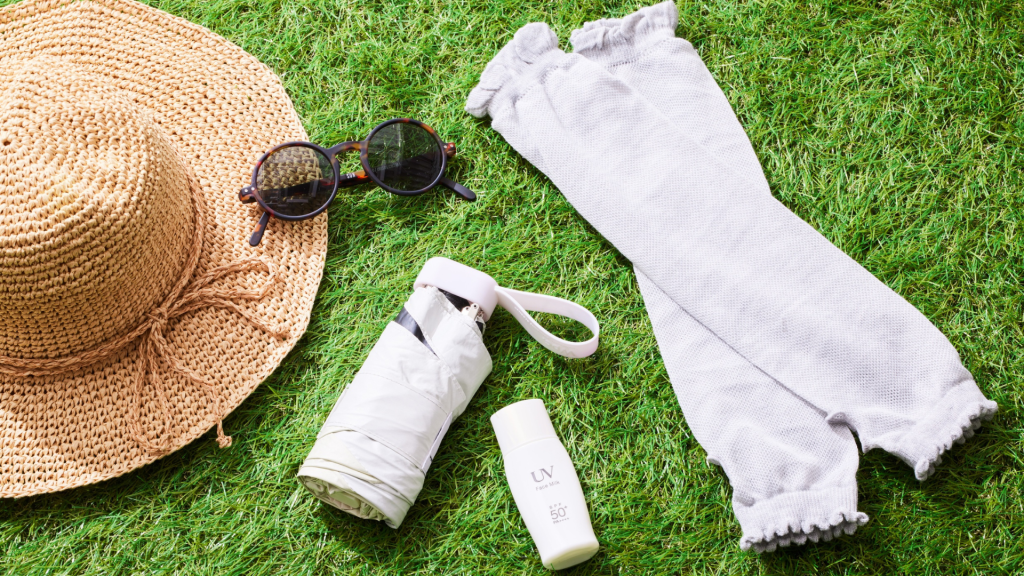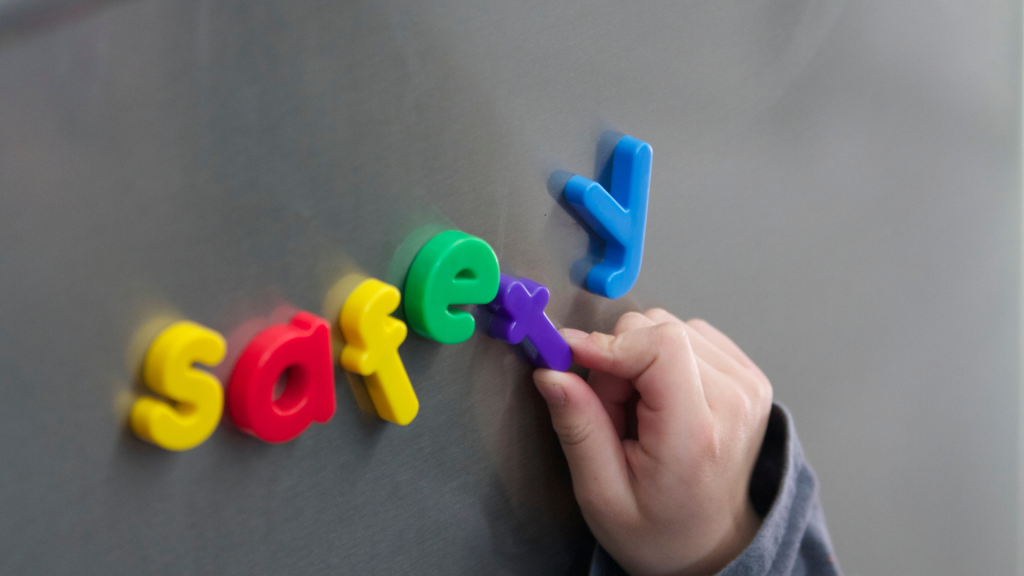Have you ever watched your child play outside, their laughter echoing in the warm sunshine, and felt that familiar pang of worry? That tiny voice in your head asking, “Are they truly safe from the sun’s powerful rays?” When it comes to sun safety for our little ones, especially those spending their days in nurseries and daycares, that concern is incredibly valid. Children’s delicate skin is far more vulnerable to sun damage than adult skin, making it crucial for parents and caregivers to be equipped with the right knowledge and tools to protect them. This isn’t just about preventing a painful sunburn today; it’s about safeguarding their long-term health and well-being. Let’s explore how we can ensure our children enjoy the magic of outdoor play without compromising their sun safety.
Table of Contents
The Power of Shade: Your Child’s Best Friend
Imagine a scorching summer day. What’s the first thing you look for? Shade, right? The same goes for our children, whose skin is much more susceptible to the sun’s intense ultraviolet (UV) radiation. Seeking shade is one of the simplest yet most effective ways to provide sun protection for your child. It’s a cornerstone of good sun safety practices. The sun is at its strongest and most dangerous between 11 AM and 3 PM, often referred to as peak UV hours. During these times, it’s highly recommended that children stay indoors or in shaded areas as much as possible. Nurseries and daycares play a vital role here, by scheduling outdoor activities during cooler parts of the day or ensuring ample shaded play zones.
But what if staying indoors isn’t an option, or your child simply loves being outside? That’s where creative shade solutions come in. Think about natural shade from trees, or artificial shade provided by canopies, gazebos, and pop-up tents. These can transform an open play area into a safe haven. It’s important to remember, however, that even in the shade, some UV rays can still reach the skin through reflection, so combining shade with other protective measures is always best. A common mistake parents and caregivers sometimes make is covering a baby’s pram with a blanket to create shade. While well-intentioned, this can dangerously raise the temperature inside the pram, leading to overheating. Always ensure good airflow and use purpose-built pram covers that allow for ventilation.
Dress for Success: Sun Safety Clothing and Accessories
When it comes to child sun care, what your child wears can make a significant difference in their level of protection. While it might seem counterintuitive to cover up in warm weather, certain clothing choices are designed to keep children cool while blocking harmful UV rays. Think of it as a wearable shield against the sun.
Start from the top: a wide-brimmed hat is an absolute must. It protects not only the face but also the ears and neck, areas often missed by sunscreen and highly susceptible to sun exposure. Sunglasses aren’t just a fashion statement for kids; they are crucial for protecting delicate eyes from UV damage, which can contribute to cataracts and other eye problems later in life. Look for sunglasses that block 99-100% of both UVA and UVB rays.
For clothing, opt for lightweight, loose-fitting garments made from tightly woven fabrics. While a regular t-shirt offers some protection, specialized UV-protective clothing (often labeled UPF for Ultraviolet Protection Factor) provides superior defense. If UPF clothing isn’t available, oversized t-shirts can offer good coverage while allowing for airflow. For water play, long-sleeved swimsuits or rash guards are excellent choices, as they provide extensive coverage even when wet, which can reduce the effectiveness of sunscreen.
Remember, the goal is to cover as much skin as possible without causing overheating. Light colors tend to reflect sunlight, helping to keep children cooler. This combination of smart dressing and other sun safety practices creates a robust defense against the sun. It’s an essential part of comprehensive sun safety.
Sunscreen Savvy: Application and Reapplication
Sunscreen is often considered the frontline defense in sun safety, and for good reason. It creates a protective barrier on the skin, absorbing or reflecting harmful UV rays. Its role in comprehensive sun safety cannot be overstated. However, its effectiveness hinges entirely on correct application and reapplication. The NHS recommends using a broad-spectrum sunscreen with at least SPF30 for both children and adults. Broad-spectrum means it protects against both UVA (aging rays) and UVB (burning rays).
Applying sunscreen isn’t a quick swipe. Skin experts suggest using a generous amount – about two tablespoons for the entire body and two fingers’ worth for the face. It needs to be applied to all exposed skin, including often-forgotten areas like the ears, neck, tops of feet, and hands. For optimal UV protection, apply sunscreen 20-30 minutes before going outside to allow it to properly bind with the skin.
The most crucial aspect of sunscreen use is reapplication. Sunscreen wears off due to sweating, swimming, and towel drying. Even water-resistant formulas are not waterproof and need to be reapplied regularly. A good rule of thumb is to reapply every two hours, or immediately after swimming, excessive sweating, or towel drying. This is especially important for active children who are constantly on the move or enjoying water play.
After a day in the sun, even with diligent application, using an after-sun lotion can be beneficial. These products help to cool and moisturize the skin, aiding in recovery and preventing peeling. For babies under 6 months, the primary recommendation is to keep them out of direct sunlight entirely. Their skin is extremely delicate and sensitive, and sunscreen is generally not recommended for this age group. Instead, rely on shade, protective clothing, and careful timing of outdoor exposure.

Hydration Heroes: Keeping Little Bodies Cool
Beyond external protection, internal care is just as vital for sun safety, especially when it comes to keeping children hydrated. On hot days, children are more susceptible to dehydration, which can quickly lead to more serious heat-related illnesses. Ensuring they have constant access to water is paramount.
Encourage children to drink water frequently throughout the day, aiming for about 8-10 ounces every few hours. It’s easy for kids to get caught up in play and forget to drink, so regular reminders from parents and caregivers are essential. Keep water bottles readily available and visible. For those who are a bit fussy about plain water, try adding slices of fruit like lemon, cucumber, or berries to give it a natural, appealing flavor.
Recognizing the subtle signs of dehydration in children is key. Look out for a dry mouth, cracked lips, fewer trips to the bathroom, or dark, strong-smelling urine. In infants, a lack of tears when crying can also be a sign. If you notice any of these, increase fluid intake immediately.
Water-rich foods can also contribute significantly to hydration. Fruits like watermelon, melon, strawberries, and cucumber are excellent choices that provide both fluids and essential nutrients. Incorporating these into snacks or meals can be a fun and tasty way to boost their fluid intake. Remember, even during water play, children can become dehydrated due to sweating, so continue to offer drinks regularly.
Recognizing the Red Flags: Sunburn and Heat Exhaustion
While prevention is always the best approach to sun safety, it’s equally important for parents and caregivers to know how to recognize the signs of sun damage and heat-related illnesses, and what steps to take if they occur. Being prepared can make all the difference.
Sunburn is the most obvious sign of sun damage. The skin will appear red, feel hot to the touch, and can be painful. In severe cases, blisters may form. If your child gets sunburned, the immediate priority is to get them out of the sun and cool their skin down. The NHS provides clear guidelines for treating sunburn:
- Cool the skin with a cool shower, bath, or damp towel. Ensure the child doesn’t get too cold.
- Apply a moisturizing after-sun lotion to soothe the skin.
- Encourage plenty of water intake to rehydrate.
- Keep sunburnt skin completely covered from direct sunlight until it has fully healed.
- Avoid using petroleum jelly (Vaseline) or ice packs directly on burnt skin.
- Do not pop any blisters or remove peeling skin.
It’s crucial to remember that sunburn symptoms might be less obvious in children with darker skin tones. While their skin may not redden as visibly, it still requires the same level of sun protection and care. Darker skin can still burn and is susceptible to sun damage, including an increased risk of skin cancer.
Heat exhaustion is another concern, especially on very hot days. It’s usually not serious if recognized and treated promptly, but it can progress to heatstroke, which is a medical emergency. The NHS outlines the following signs and symptoms of heat exhaustion:
- Headache
- Intense thirst
- Dizziness and confusion
- Excessive sweating and pale, clammy skin
- Cramps in the arms, legs, and stomach
- Loss of appetite and feeling sick
- Fast breathing and a faster pulse
- A temperature of 38 degrees Celsius (100.4°F) or above

If you suspect heat exhaustion, move the child to a cool place immediately. Have them lie down with their feet slightly elevated, and give them plenty of water to drink. Applying a cold sponge or cool packs to the armpits or back of the neck can also help. If the child does not cool down within 30 minutes, or if their condition worsens, seek immediate medical attention by calling emergency services.
By understanding these signs and knowing how to respond, you can provide timely and effective care, ensuring your child’s well-being even when the sun is shining its brightest.
Final Words
Ensuring our children are safe in the sun is a collective effort, requiring vigilance from parents, nurseries, and daycares alike. By prioritizing shade, appropriate clothing, diligent sunscreen application, and consistent hydration, we can significantly reduce the risks associated with sun exposure. Remember, every sunny day is an opportunity for joyful play, and with the right precautions, we can make sure those memories are nothing but bright. What are your go-to sun safety tips for your little ones? Share your wisdom in the comments below!
Don’t miss our latest article: “How Nursery Marketing Gets Results with InGrowth: A Trusted Partner for Growth“
Follow us
